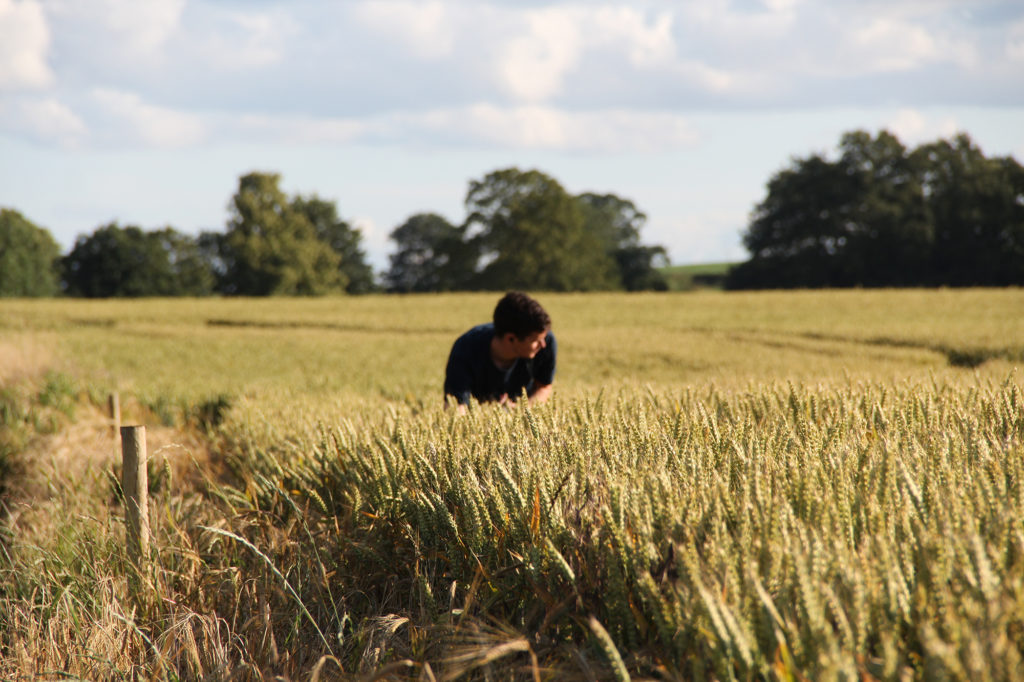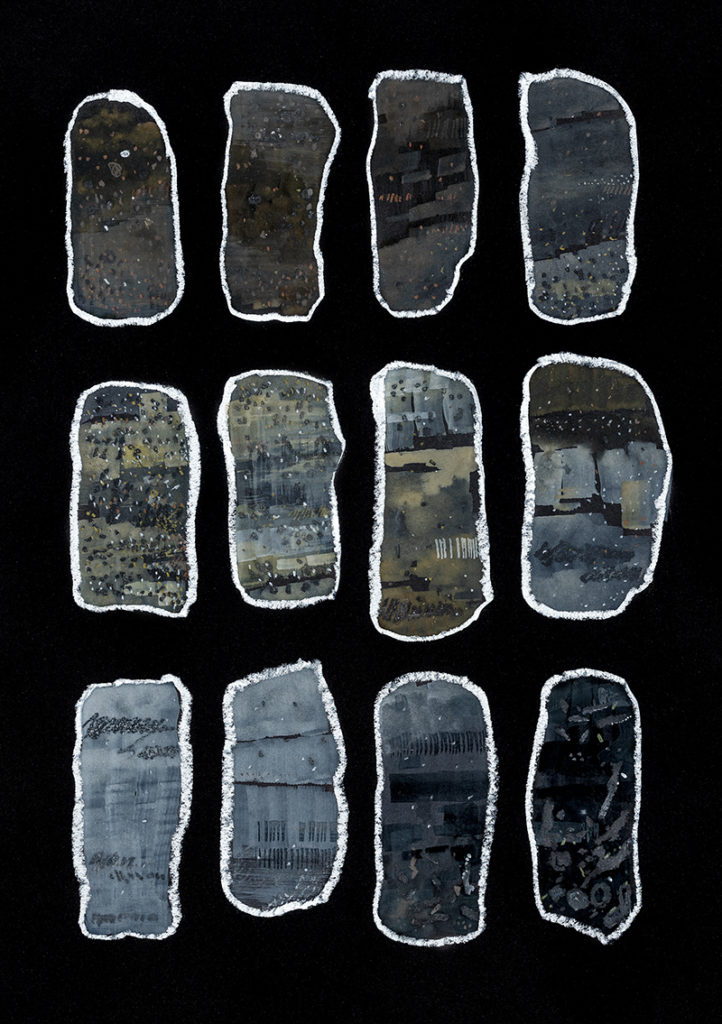Rose Ferraby presents the fruits of her collaborative project with Rob St. John
It is January 2019. Rob and I are sitting aloft in his studio as the snow falls quietly and rapidly over the Bowland landscape beyond. We’re looking through his toolkit of microphones, listening to recordings that take us from a wire on the Lancashire moors, to the metal door of a military bunker on the Finnish Archipelago, then plunging us into the chilly waterways of Scotland.
Rob and I had been chatting for a while about the possibility of working together on a project at Aldborough, where Martin Millett and I have been researching the Roman town of Isurium Brigantum for over a decade. For a long while I’d been thinking about how the invisible landscape could be brought to life; how the myriad layers of past activity, which told so many stories, could be drawn out. My imagination is bustling with the different kinds of archaeological data and images; the tacit materiality of excavated ground in this place. How could different kinds of creative practice begin to draw its liveliness to the surface once more?

Rob St. John making field recordings by the old quay at Aldborough (Image: Rose Ferraby)
Aldborough (Isurium Brigantum) was the civilian capital of the Brigantes; a town built to administer the trade and peoples of a swathe of northern England from York into the Pennines, and up to the Tees. Nowadays, it’s a quiet village clustered around a green. Yet the knowing eye can see the Roman roads beneath the modern ones, the forum standing high and pale in its limestone glory in the centre, the dense lines of town houses and shops, warehouses and workshops. And beyond its walls, the roads lined with settlement or fields or funerary monuments; the quarries and trackways all evidence of a bustling, long-lived community.

‘Palaeochannel’ by Rose Ferraby, 2019
So as Rob and I settled in to sit out the snow storm, we began to plan how we might explore the sub-surface landscape in new ways, attending to details or atmospheres of space; how to bring the underground worlds alive. In our previous work, we have both been interested in ways of understanding landscapes, being attentive to scales from broad swathes to the macro. And so we began the process of walking and talking; of sticking microphones into nooks and crannies, photographing the shift of time and light. We began to make marks in image and sound that drew out the complex layers of past landscapes, and begin to tell stories.
You can explore the archaeological landscape of Aldborough through the art trail and artwork.
The final copies of the Soundmarks book are available to buy, including a download of Rob’s sound piece and a set of 8 postcards of Rose’s paintings.